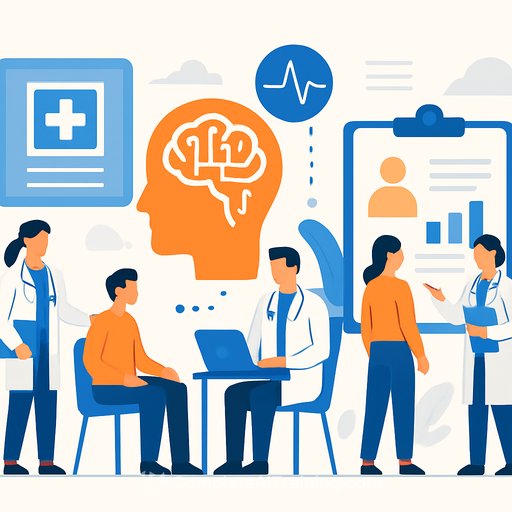Jiangsu pilots put AI to work across triage, diagnosis, population health, and referrals
China's latest public hospital reform pilots in Jiangsu Province are moving AI from slide decks into daily clinical workflows. The focus: faster primary care triage, diagnostic support, personalised population health profiles, and tighter referral tracking.
These efforts sit inside the National Health Commission's broader reform program, which uses Jiangsu as a demonstration province for governance, service redesign, and digital health at scale.
What's being built right now
- Primary care triage and diagnostic support: In Zhangjiagang, "AI general practitioners" assist pre-consultations, diagnosis, and case/prescription review. The pilot has supported more than 5 million people and, according to Suzhou's vice mayor Ji Jing, has improved primary care diagnostic capability and accuracy.
- Personalised health profiles: Suzhou is developing an "AI Personal Health Assistant" inside the SuZhouDao City Life Services app. It analyzes annual physicals and medical records to generate individual health profiles and next-step guidance.
- Closed-loop referrals and population health: Binhai County's referral management system uses AI to produce personalised health analysis reports and track referrals through completion, reducing delays and leakage.
Digital infrastructure behind the pilots
Jiangsu has stood up a provincial health cloud to support data exchange and analytics. The province is rolling out platforms for real-time access and sharing of imaging and diagnostic reports, remote consultation, ECG monitoring, and referral centers.
To date, 256 internet hospitals are live across tertiary hospitals, with reported capacity up 52% year over year. That surge is helping redistribute access without flooding outpatient departments.
City and county programs to watch
- Suzhou: Unified digital health records, a public hospital governance and management platform, and a citywide collaboration platform for health services.
- Yangzhou: Intelligent supervision of medical behavior, cross-institution "carry-your-records" services, and continued expansion of internet hospitals.
- Nanjing: A five-tier remote consultation network linking provincial, city, county, township, and village facilities, plus a smart platform to standardize clinical pathways across member institutions.
- Binhai County: A digital medical network connecting 15 township health centers and 310 village clinics to shared diagnostics and more consistent care standards.
Why this matters for healthcare leaders
- Front-door flow: AI triage and pre-consult free clinicians to focus on higher-acuity work.
- Quality and safety: AI-assisted diagnosis and prescription review can reduce variance and flag risks earlier.
- Population health: Citywide profiles and unified records create a clearer view of risk stratification and follow-up needs.
- Referral integrity: Closed-loop tracking improves completion rates and time to treatment.
How this fits into China's reform model
The pilots track with the National Health Commission's program inspired by the Sanming model (2012): integrate public health settings, use a prepaid insurance fund at the group level, and shift focus from treatment to overall health. Jiangsu's approach pairs that financing and governance frame with shared digital infrastructure and AI-enabled workflows.
Practical steps if you're planning a similar rollout
- Pick high-signal use cases first: Triage, ECG monitoring, image review, and case/prescription checks have measurable endpoints and known workflows.
- Embed into existing systems: Surface AI outputs inside the EMR/HIS/LIS/PACS to cut clicks. Capture clinician overrides and reasons to improve models.
- Track closed-loop metrics: Time-to-triage, referral completion rate, diagnostic agreement, unplanned returns, and adverse-event flags.
- Stand up governance: Create an AI oversight group. Run silent trials, define performance thresholds, and set post-deployment monitoring with rollback plans.
- Invest in data quality: Consistent patient IDs, standardized templates, and interoperable schemas. Clean data beats bigger models.
- Train the frontline: Short, scenario-based training for clinicians and nurses. Provide job aids and refreshers inside the workflow.
Execution tips from the pilots
- Pre-consult checklists: Use AI to structure symptoms, history, meds, and allergies before the clinician visit.
- Decision support as a second reader: Keep final judgment with clinicians. Log concordance, discordance, and outcomes.
- Referral rules engine: Standardize criteria for escalation and tie them to scheduling and transport to reduce drop-offs.
- Equity lens: Ensure township and village sites get the same AI access and training as urban centers.
What to watch next
- Performance of AI "GPs" across age groups, comorbidities, and facility tiers.
- Impact of internet hospitals on tertiary workload, readmissions, and patient satisfaction.
- Cross-city data sharing for imaging and reports, and whether similar models scale beyond Jiangsu.
Resources
Upskilling your team
If you're building AI fluency across clinical, operations, or IT roles, a structured learning path helps.
- AI courses by job role for targeted upskilling
Your membership also unlocks:






